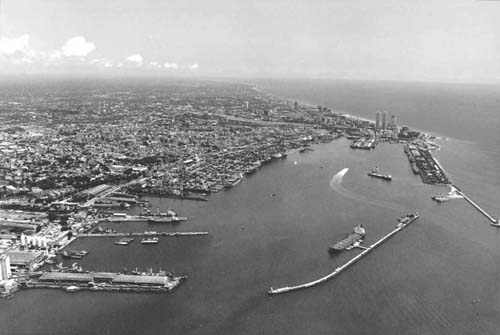Japan's Official Development Assistance White Paper 2006
Main Text > Part I JAPAN'S OFFICIAL DEVELOPMENT ASSISTANCE FOR WORLD PEACE AND PROSPERITY > Chapter 1 The Role of ODA: Its Transition and Changes
Chapter 1 The Role of ODA: Its Transition and Changes

Port of Colombo, a hub for Southwest Asia. Japan assisted the port's expansion and improvement through yen loans and various other measures. (Sri Lanka)
Key Points
- Japan's ODA, at its onset, played roles of reconstructing friendly relations with Asian countries, reinforcing the liberal bloc, and promoting exports.
- ODA, as it expanded in quality and quantity after going through the era of rapid economic growth, contributed to the "East Asian Miracle" through project assistance in the post-oil crisis period.
- Japan established its ODA Charter against the backdrop of the emergence of global issues and other events after the Cold War.
- In the 21st century, Japan revised its ODA Charter against the backdrop of a decrease in its ODA budget and the rise of emerging countries. ODA reform is underway to cater so that it could play ever expanding roles.
For more than 50 years since it began in 1954, Japan's Official Development Assistance (ODA) has been implemented as part of its diplomatic policy to support the self-help efforts of developing countries. Japan's ODA contributes significantly to the development of developing countries and to improving the living standards of their people, and therefore it has been highly appreciated by recipient countries and the international community at large. However, ODA does not merely benefit the developing countries that receive assistance. By supporting the stability and development of developing countries, it contributes not only to the peace and stability of the international community but also to the security and prosperity of Japan itself. Part I explains to what extent ODA has been contributing to the stability and development of developing countries and how ODA is relevant to Japan itself.


 Next Page
Next Page